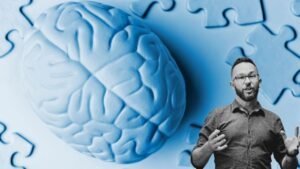Let’s face it: everyone makes mistakes. But how often do we really stop and engage in reflecting on mistakes? In the story of life, each of us is the hero on a journey, and mistakes are the obstacles we encounter along the way. These errors are a natural part of our adventure, tempting us to forget about past mistakes and move on. However, there’s a powerful secret hidden within these blunders—an opportunity for personal growth and career success.
By pausing to analyze what went wrong, we equip ourselves with the tools to overcome similar challenges in the future. Without reflection, the same errors tend to repeat themselves, hindering our progress and creating frustration. But when we dedicate time and effort to understanding them, we unlock the potential to grow both personally and professionally, paving the way for a more fulfilling journey.
Why Reflecting on Mistakes Matters?
Mistakes often feel like setbacks, but they’re actually opportunities in disguise. When we take the time to reflect, we can uncover patterns, identify gaps in our approach, and ultimately grow. Without reflection, the same mistakes tend to repeat themselves, hindering progress and creating frustration. Reflection helps us develop self-awareness and emotional intelligence—two qualities essential for navigating challenges and achieving success.
Moreover, reflecting on mistakes allows us to recognize and acknowledge the importance of learning from wrong decisions. It’s not just about identifying what went wrong but also realizing what went right and how to leverage those insights. For leaders, this process is even more critical because it sets the tone for how a team or organization deals with similar challenges. Leaders who model reflective practices inspire their teams to adopt the same approach, fostering a culture that values growth over perfection.
Introducing "The Four What" Model
To make reflection more actionable, consider using “The Four What” model. This simple framework helps you dissect mistakes and uncover valuable lessons:
1. What Happened? Start by objectively analyzing the situation. What events led to the mistake? Avoid assigning blame—this is about understanding the facts. For example, if a project missed its deadline, identify the specific factors that contributed to the delay. Was it unrealistic timelines, miscommunication, or unexpected obstacles?
2. What Went Wrong? Pinpoint the key factors that contributed to the error. Was it a lack of communication, insufficient preparation, or maybe an external challenge? By drilling down into the root causes, you can avoid surface-level conclusions and gain deeper understanding. This step requires honesty and openness, both with yourself and others involved.
3. What Can We Learn? This is the heart of the process. What lessons can be drawn from this experience? How can this knowledge be applied moving forward? For instance, if poor planning led to a mistake, the lesson might be to implement more robust project management practices. Reflect on how these lessons align with your long-term goals and values.
4. What’s Next? Turn insights into action. What steps can you take to avoid similar mistakes in the future? This might involve new strategies, improved systems, or additional training. For teams, this could mean revising processes, conducting training sessions, or setting clearer expectations. Actionable steps ensure that reflection leads to tangible improvement.
Making Reflection a Habit for Personal Growth
Reflection doesn’t have to be a lengthy process. Set aside a few minutes after major projects or challenging situations to run through “The Four What” model. If you’re working with a team, create a culture where open discussions about mistakes are encouraged—not feared. This builds trust and accelerates collective growth.
One practical way to make reflection a habit is by scheduling regular check-ins. For individuals, this could be a weekly journaling session where you review recent challenges and what you’ve learned from them. For teams, consider incorporating reflection into meetings or debriefs. Asking questions like, “What did we learn from this?” or “How can we improve next time?” can foster a culture of continuous improvement.
Tools like feedback surveys, retrospectives, and one-on-one discussions can make reflection a structured part of your workflow. Technology can also help—apps and platforms designed for tracking progress and lessons learned can streamline the process and make it more engaging.
Overcoming the Fear of Mistakes
One of the biggest barriers to reflection is the fear of mistakes themselves. Many people view errors as failures to be avoided at all costs. However, this mindset can be counterproductive. Embracing mistakes as part of the learning process requires a shift in perspective. Instead of asking, “Why did I fail?” ask, “What can I learn from this?”
Recognizing patterns of behavior is crucial in avoiding the same mistake. For leaders, it’s essential to create an environment where mistakes are seen as opportunities for growth rather than reasons for punishment. This doesn’t mean ignoring accountability but rather focusing on constructive solutions. Celebrate the effort and courage it takes to try something new, even if it doesn’t work out perfectly. Over time, this approach can transform the way teams and individuals deal with challenges.
Identifying Patterns and Avoiding the Same Mistakes
Recognizing patterns of behavior is crucial in avoiding the same mistakes. By analyzing past mistakes, individuals can identify common themes and warning signs that may lead to similar challenges. This process requires a high level of self-awareness and self-reflection, allowing you to understand personal tendencies and habits that may contribute to repeated mistakes.
Developing emotional intelligence plays a significant role in this journey. It helps you recognize and manage your emotions, reducing the likelihood of impulsive decisions that may lead to mistakes. Taking responsibility for past mistakes and acknowledging areas for improvement can help you develop a growth mindset, making it easier to avoid similar errors in the future. By being proactive and mindful, you can turn potential pitfalls into opportunities for personal growth and career success.
Analyzing Root Causes and Determining Solutions
Analyzing the root causes of mistakes is essential in determining effective solutions. By identifying the underlying reasons for mistakes, you can develop targeted strategies for improvement. Conducting a thorough analysis of past mistakes provides valuable lessons and insights that can inform future decision-making.
Seeking feedback from others and being open to constructive criticism can offer new perspectives and help you identify blind spots. This collaborative approach can lead to a deeper understanding of the issues at hand. Developing a problem-solving approach that involves critical thinking and creativity can help you devise innovative solutions to complex challenges. By addressing the root causes, you can prevent the same mistakes from recurring and pave the way for continuous improvement.
Real-Life Examples of Learning Valuable Lessons from Mistakes
History is full of examples of people and organizations that turned countless mistakes into success stories. Take Thomas Edison, for instance. When asked about his many failed attempts to create the lightbulb, he famously said, “I have not failed. I’ve just found 10,000 ways that won’t work.” Edison’s persistence and ability to learn from his mistakes ultimately led to one of the most significant inventions in history.
In the business world, companies like Pixar and Google have built cultures that embrace failure as part of innovation. Pixar’s “Braintrust” meetings, for example, encourage open and honest feedback, allowing teams to identify and address mistakes early in the creative process. Google’s practice of conducting “postmortems” after projects fosters a culture of learning by analyzing what went well and what didn’t.
Putting Lessons into Practice
Putting lessons into practice is essential in translating knowledge into action. Developing a plan for implementing changes and improvements can help you stay on track and achieve your goals. Creating a culture of learning and experimentation encourages individuals to take calculated risks and try new approaches.
Embracing a growth mindset and being open to new experiences can help you develop resilience and perseverance in the face of challenges. Celebrating successes and reflecting on progress can keep you motivated and engaged in the learning process. By consistently applying the lessons learned, you can turn every mistake into a stepping stone toward success.
Embrace the Power of Mistakes for Self Awareness
Success isn’t about avoiding mistakes; it’s about learning from them. By making reflection a regular practice, you can turn every misstep into a stepping stone toward success. So, the next time something goes wrong, don’t rush to forget it. Take a moment, reflect, and let it guide you to a better path.
Mistakes are inevitable, but their impact is entirely up to you. Will you let them hold you back, or will you use them as fuel for growth? The choice is yours. Embrace the process, trust in your ability to learn, and watch as each reflection brings you closer to your goals. Remember, the journey to success is paved with lessons—and every mistake is a step forward.
By reflecting on past mistakes and taking responsibility for wrong decisions, you gain insights that lead to improvement. With self-reflection and self-awareness, you can identify warning signs, recognize alternative approaches, and develop new habits that drive progress. Making mistakes is part of being human, but reflecting on them makes all the difference. Whether in life, career, or business, reflection and hard work are the keys to turning confusion into clarity and failures into stepping stones toward success.
Creating a Culture of Learning
Creating a culture of learning is essential in fostering personal growth and development. Encouraging open communication and feedback helps individuals feel comfortable sharing their mistakes and lessons learned. Developing a safe and supportive environment empowers individuals to take risks and try new approaches without fear of failure.
Providing opportunities for training and development helps individuals build new skills and knowledge, contributing to their overall growth. Recognizing and rewarding individuals for their efforts and progress creates a positive and motivating work environment. By fostering a culture of learning, you can ensure that mistakes are seen as valuable opportunities for growth, leading to continuous improvement and success.

A trailblazer in humanising leadership and building high-resilience teams. As a former United Nations Peacekeeper, he leverages his high-stakes experience to redefine leadership dynamics. With a career distinguished by numerous accolades, Joseph now helps organizations thrive through a human-centric approach, enhancing performance, productivity, and workplace culture.






